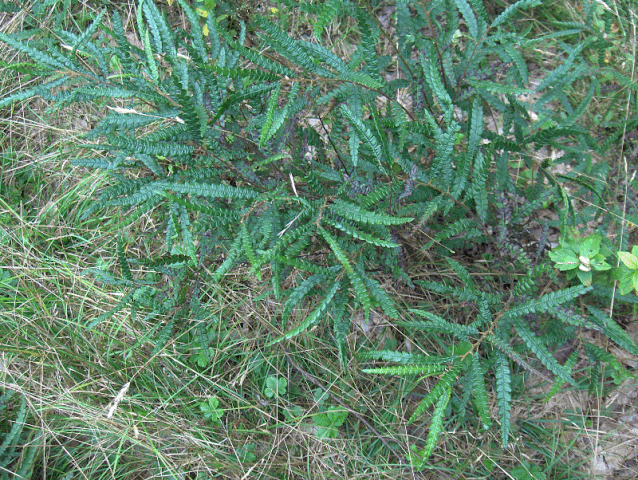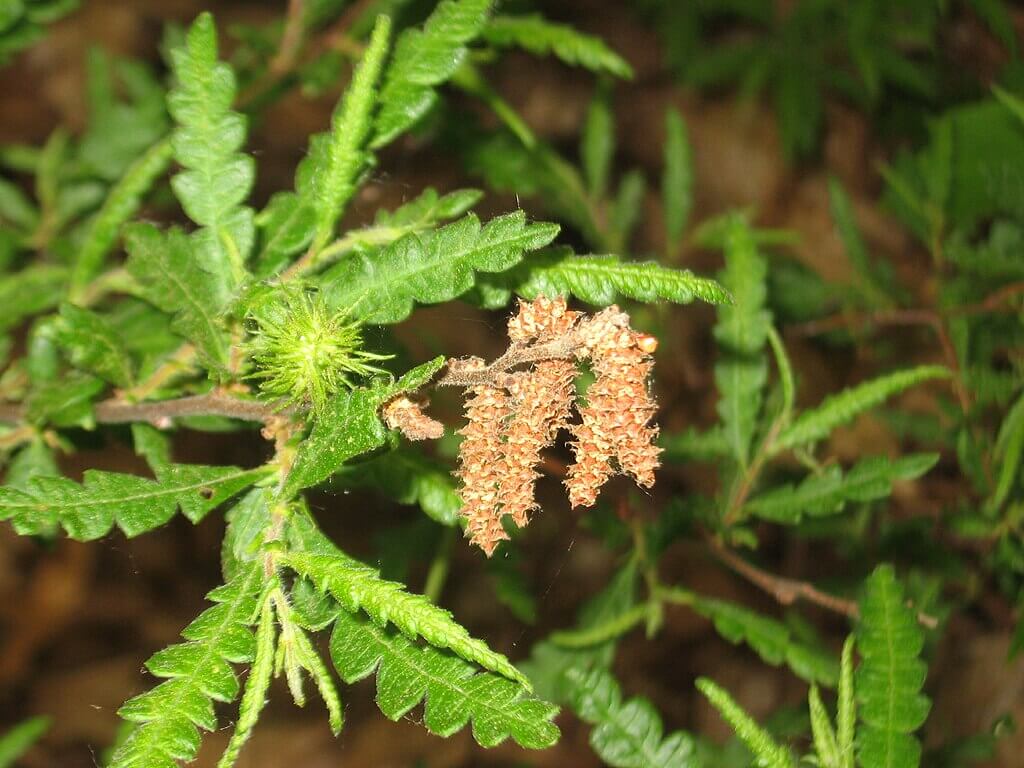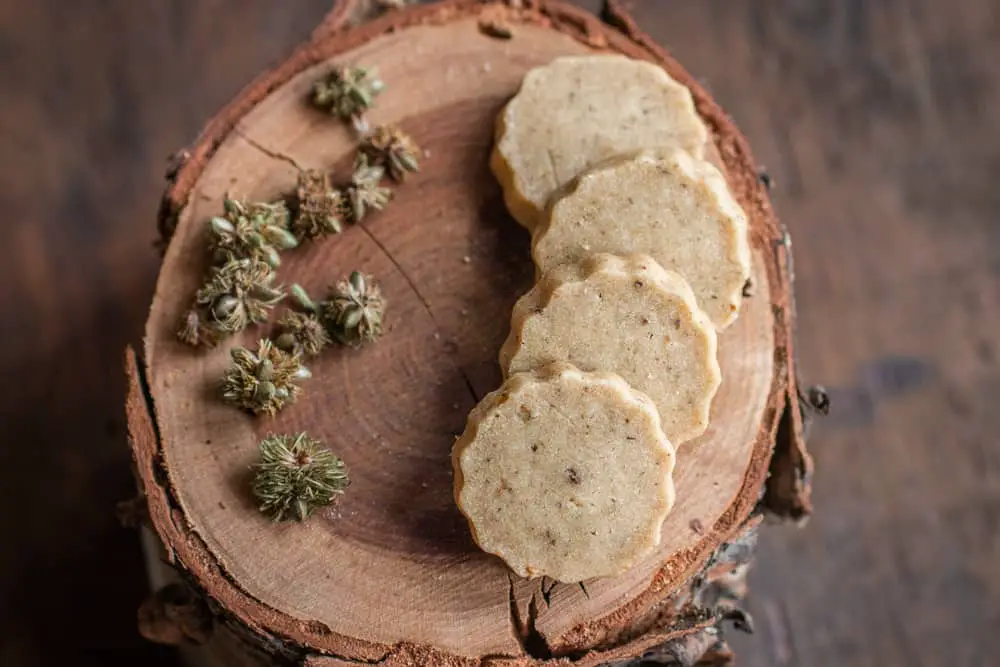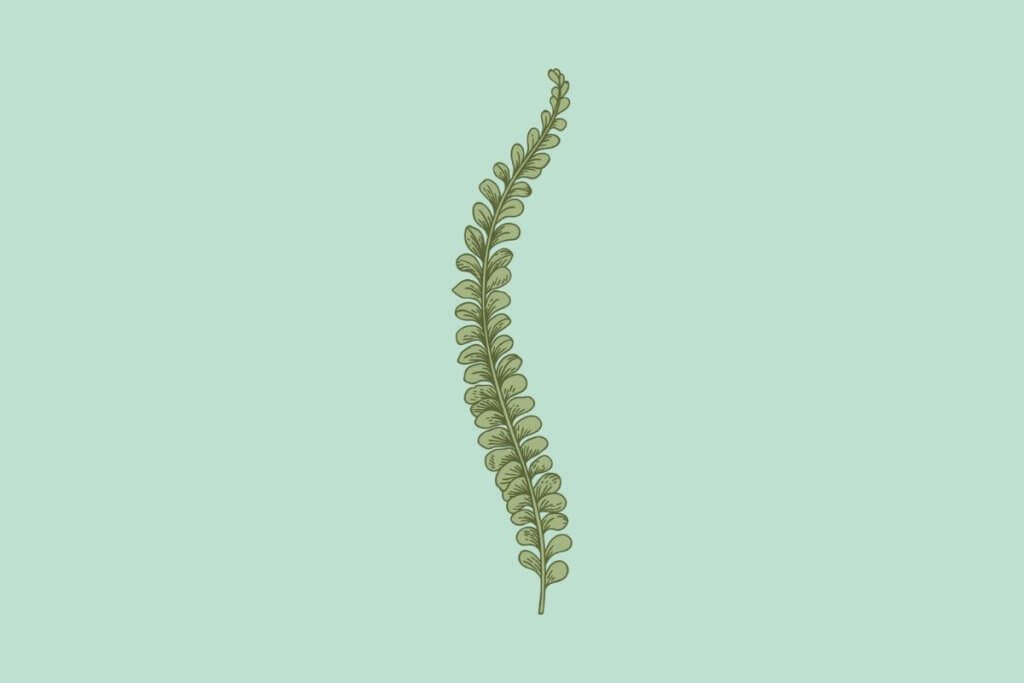Sweet fern (Comptonia peregrina) is a fascinating plant native to eastern North America. It's not a true fern but rather a member of the bayberry family (Myricaceae). Sweet fern is known for its aromatic leaves and its historical uses by Indigenous peoples and early European settlers.
What does the sweet fern plant look like?
Sweet fern is a unique and distinctive plant. Despite its name, it is not a true fern but rather a shrub.
Here are the key characteristics that describe what the sweet fern plant looks like:
Growth Form:
What Are You Foraging For Right Now?
We're thrilled to hear your ideas. What would you like to submit today? Feel free to share your thoughts and experiences with us.
- Sweet fern is a low-growing, deciduous shrub that typically reaches a height of 2 to 4 feet (60 to 120 centimeters).
Leaves:
- The most distinctive feature of sweet fern is its fern-like leaves. The leaves are deeply lobed, almost like the fronds of a fern, giving the plant its common name.
- Sweet fern leaves are dark green during the growing season, and they turn brown in the fall. When the leaves are crushed or rubbed, they emit a sweet, aromatic fragrance, which is one of the plant’s defining characteristics.
Flowers:
- Sweet fern is monoecious, meaning it has separate male and female flowers on the same plant. The flowers are not showy and are relatively inconspicuous.
- Male flowers produce pollen, while female flowers develop into small, burr-like nutlets containing seeds.
4. Bark:
- The bark of sweet fern is grayish-brown and becomes rough with age.
5. Habitat:
- Sweet fern is often found in dry, sandy, or rocky soils. It is well-suited to open woodlands, pine barrens, and other dry, disturbed areas.
7. Fall Color:
- In the autumn, sweet fern leaves turn a warm, coppery brown, adding to the plant’s aesthetic appeal.



Does sweet fern have thorns?
No, sweet fern does not have thorns. It is a thornless, low-growing shrub.
Can you eat sweet fern?
Yes, sweet fern is edible. Sweet fern leaves can be used to flavor food and beverages. They can be used to make fragrant herbal tea.
What does Sweet fern taste like?
Sweet fern gets its name in part from its mildly sweet flavor. The taste and aroma of sweet fern can be somewhat reminiscent of herbal and woody notes, which contribute to its unique flavor profile.
What is sweet fern good for?
1. Flavouring Herb
Sweet fern has a unique and aromatic flavor that can be used to add a pleasant twist to various dishes and beverages.
2. Medicinal Uses
Sweet fern contains aromatic compounds and tannins, which have led to its use in traditional herbal medicine. Historically, it has been used for the following purposes:
- Digestive Aid: It has been used to ease digestive discomfort and as a mild digestive tonic.
- Respiratory Support: Sweet fern has been employed to soothe respiratory issues and coughs.
- Topical Applications: The leaves were sometimes used as a poultice for wounds and skin irritations.
- Astringent Properties: Due to its tannin content, sweet fern has been used as an astringent, which can help tighten and tone tissues.
3. Aromatic Qualities
Sweet fern’s strong, pleasant, and aromatic fragrance has made it valuable for its scent, and it has been used in sachets and potpourri.
How to Make Sweet Fern Tea?
To make sweet fern tea, gather a handful of fresh or dried sweet fern leaves and steep them in hot water, similar to how you would make any herbal tea. Use about one teaspoon of dried sweet fern leaves per cup of water.
Allow the tea to steep for about 5-10 minutes to extract the aromatic flavors.
Other medicinal teas we recommend include:
How To Use Sweet Fern When Cooking?
Seasoning for Grilled Foods:
- Sweet fern leaves can be used as a seasoning for grilled meats, vegetables, or fish.
- Crush or chop the leaves and sprinkle them on the food before grilling. The heat will release the aromatic flavors, imparting a unique taste.
Herbal Seasoning Blend:
- Sweet fern can be blended with other herbs and spices to create a unique herbal seasoning blend.
- Combine crushed sweet fern leaves with ingredients like thyme, rosemary, oregano, or sage to create a flavorful herb mix.
Infused Oils or Vinegars:
- Make sweet fern-infused oils or vinegars by adding crushed sweet fern leaves to a bottle of olive oil or vinegar.
- Allow the mixture to sit for a few weeks to infuse the flavors before using it in salad dressings, marinades, or as a drizzle for roasted vegetables.
Baking and Desserts:
- Sweet fern can add an intriguing flavor to baked goods and desserts.
- Crushed sweet fern leaves can be added to cookie or cake batter, fruit compotes, or homemade ice cream for a unique twist.

Foraging For Sweet Fern
Sweet fern is native to eastern North America and can be found in various states from the Maritime provinces of Canada down to the southern United States.
Where To Forage
Here are some states and regions where you may find sweet fern and can consider foraging for it:
- New England: Sweet fern is commonly found in the New England states, including Maine, New Hampshire, Vermont, Massachusetts, Connecticut, and Rhode Island. It is often encountered in dry, sandy, or rocky soils in this region.
- Mid-Atlantic States: Sweet fern can also be found in the Mid-Atlantic states, including New York, New Jersey, Pennsylvania, Delaware, and Maryland. Look for it in dry woodlands and open areas.
- Appalachian Region: Sweet fern can be found in parts of the Appalachian region, including West Virginia, Virginia, and parts of North Carolina and Tennessee.
- Great Lakes Region: In the Great Lakes states such as Michigan, Ohio, and parts of Indiana, sweet fern may be found in suitable habitats.
- Midwestern States: While less common, sweet fern can sometimes be found in parts of the Midwest, including areas of Wisconsin and Minnesota.
- Southeastern States: In the southeastern United States, sweet fern is less common but can still be found in suitable habitats, including parts of Georgia and the Carolinas.
When To Forage
Sweet fern is typically best foraged in the spring and summer when its leaves are lush and aromatic. This is when you’ll find the leaves at their peak flavor and fragrance.

Where is the best place to plant a sweet fern?
Sweet fern is a versatile and hardy native shrub that can be a valuable addition to your landscape, particularly if you have a preference for native plants and wish to create a wildlife-friendly garden.
Sunlight: Sweet fern thrives in full sun to partial shade. It can tolerate a wide range of light conditions, making it adaptable to different areas of your garden.
Soil Type: Sweet fern is well-suited to dry, sandy, or rocky soils. It is often found in nutrient-poor soils, making it a great choice for areas where other plants may struggle.
Drainage: Good drainage is essential for sweet fern. It does not do well in waterlogged or poorly drained soils. Plant it in well-drained areas to ensure its health and vitality.
Wildlife Garden: Sweet fern can attract pollinators like bees and butterflies, so consider planting it in a wildlife garden to support local wildlife.
Erosion Control: Its deep roots and adaptability to poor soils make sweet fern useful for erosion control on slopes or in areas prone to soil erosion.
Native Plant Garden: If you’re creating a native plant garden, sweet fern is a native species in eastern North America and can be a valuable addition to such a garden.
Companion Planting: Sweet fern can be planted alongside other native plants and wildflowers that thrive in similar conditions to create a natural and attractive landscape.
Low-Maintenance Landscapes: Sweet fern requires minimal maintenance once established. If you’re looking for a low-maintenance plant, it’s a good choice.
Aromatic Garden: Sweet fern’s fragrant leaves can add a pleasant aroma to your garden. Consider planting it in areas where you can appreciate its scent.
What to read next: A Forager’s Guide To Wild Fennel
Ana has always been interested in all things nature and flora. With her expertise in home gardening and interest in foraging, she has been spending her weekends and free time looking for edible native plants, flowers, and fungi. One of her many hobbies includes testing new savory and sweet recipes, juices or teas made from freshly picked plants, wild fruits, or mushrooms.

